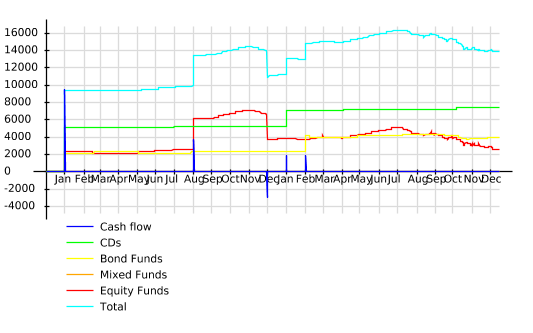Note: VScape is no longer being maintained.
DESCRIPTION
Vscape (a.k.a. a Metastable Program for Metastable Vacua)
Vscape is an interactive tool for studying the one-loop effective potential of an ungauged supersymmetric model of chiral multiplets. The program allows the user to define a supersymmetric model by specifying the superpotential. The F-terms and the scalar and fermionic mass matrices are calculated symbolically. The program then allows you to search numerically for (meta)stable minima of the one-loop effective potential. Additional commands enable you to further study specific minima, by e.g. computing the mass spectrum for those vacua. Vscape combines the flexibility of symbolic software with the speed of a numerical package.
The program can generate data files that can easily be plotted with a mathematical package (Mathematica, Maple,...). Vscape also produces output files formatted according the Model Input File standard described in the Les Houches Accord 1.0. The output of Vscape can thus subsequently be fed into a susy spectrum generator (e.g. SOFTSUSY).
DOWNLOAD AND INSTALLATION
Linux
To install the program you will need a C++ compiler. Besides the standard C++ libraries, you will also need the (developers) version 1.10 or higher of the GNU Scientific Library (GSL) for numerical outines, version 1.4.1 or newer of GiNaC and version 1.2.0 or higher of Class Library for Numbers (CLN) for symbolic routines. Although not essential, it is useful to have a version of the GNU Readline Library installed for handy tab completion.
CLN has to be installed before you install GiNac, since GiNaC is based on CLN. Note that CLN only compiles without hassle on the GNU g++ compiler version 2.95 or newer. To install Vscape the pkg-config utility is required.
Once the libraries are installed, download the file:
-
vscape-1.1.3.tar.gz
For a default installation, execute the following commands on a terminal in the directory containing the downloaded file:
tar -xvf vscape-1.1.3.tar.gz
./configure
make
make install
Additional installation options are detailed in the INSTALL file included in .tar.gz file. You run the program by typing:
Vscape
Windows
A compiled version for Windows (XP) can easily be installed by downloading
-
vscape-1.1.3.zip
Unzip the file in an empty directory, then run the program Vscape.exe.
To remove the program again, delete the directory with its content.
This compiled version might not work on all Windows versions.
To study more complex, computationally intensive models we suggest to use the Linux version, since this Windows
version is at least 4 times slower, since it relies on the emulator dlls from cygwin.
MANUAL
Check the manual, for more information on how to use the program. To ask questions, report bugs or make suggestions please contact the author.
AUTHOR
Korneel van den Broek <my-first-name@physics.rutgers.edu>
Physics Graduate Student
Rutgers University
136 Frelinghuysen Road
Piscataway NJ, 08854
U.S.A.
COPYRIGHT
Copyright © 2007 Korneel van den Broek - Rutgers University, New Brunswick NJ, USA.
If you use Vscape to write a paper, please cite
-
Korneel van den Broek, "Vscape V1.1.0 - An Interactive Tool for Metastable Vacua", arXiv:0705.2019v1 [hep-ph].
which is the Vscape manual. The version on the arXiv will be updated along with new releases of the program.
This program is free software. You can redistribute it and/or modify it under the terms of the GNU General Public License as published by the Free Software Foundation, either version 2 of the License, or (at your option) any later version.
This program is distributed in the hope that it will be useful, but WITHOUT ANY WARRANTY, without even the implied warranty of MERCHANTABILITY or FITNESS FOR A PARTICULAR PURPOSE. See the GNU General Public License for more details.
You should have received a copy of the GNU General Public License along with this program. If not, write to the Free Software Foundation, Inc., 675 Mass Ave, Cambridge, MA 02139, USA.


